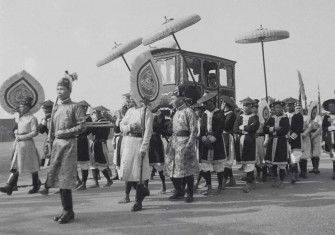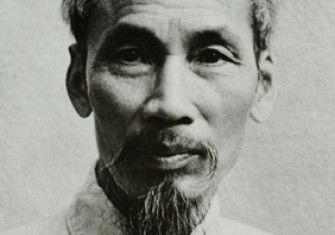Vietnam Before The War
Vietnamese identity has been forged in opposition to imperialism. But the country has long been the conqueror as well as the conquered.
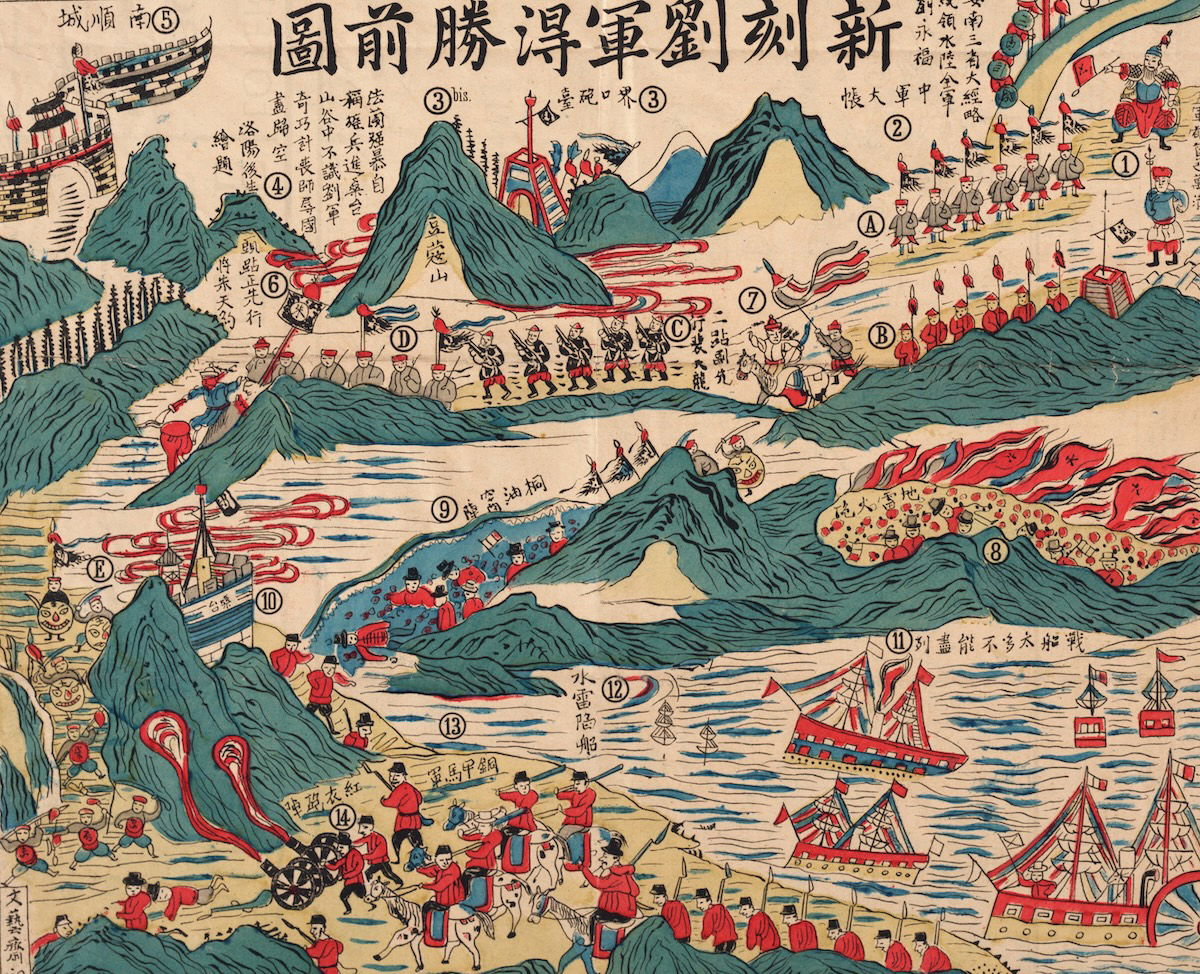
Most readers outside Vietnam will still chiefly associate this small, coastal country with the decade-long war that bogged down the United States army in a struggle to prevent communist North Vietnam taking over its non-communist southern half. The Vietnam War ended in a humiliating defeat for the US in 1975. Loss also marks French memories of its former colony. The embarrassing defeat France suffered during the battle of Dien Bien Phu in 1954, when Vo Nguyen Giap’s troops brought an end to 80 years of colonial rule, resonates in French politics to this day. In Vietnam, the theme of heroic victory dominates the nation’s image of itself. Every year, millions of school children and cadets learn that their Vietnam, stretching in the form of an ‘S’ from the Red River in the north to the Mekong delta in the south, owes its existence to a long tradition of resistance to foreign invasion. Before the Americans and the French, the Vietnamese had driven out the Chinese and the Mongols. Ho Chi Minh is just one of many heroes to have secured Vietnam’s independence. The French and the US had only themselves to blame for ignoring the lessons of history.
There is, however, a price to be paid for this resistance-driven narrative. Creating a past in which Vietnam, with the borders and shape we recognise today, always fought in unity against foreign invaders in its present form obscures a more complex and fascinating history.
Indeed, the long, S-like Vietnam that we see on maps today has not always existed in that form. Like the United States, Russia or even China, Vietnam is a product of its own colonial expansion. And, like empires throughout history, it began in a small core area and expanded to its imperial form. The cradle of Vietnamese civilisation is located in the Red River delta, where an independent, centralised state named Co Loa emerged around the third century BC near the country’s present capital, Hanoi. Although Co Loa was a remarkably vibrant state for the time, its independence was short-lived, as the Chinese empire to the north began dispatching its troops into the southern borderlands. From the second century bc, the Chinese took control of the Red River and transformed northern Vietnam into its southernmost province, Jiaozhi. Vietnam remained part of China for a millennium.
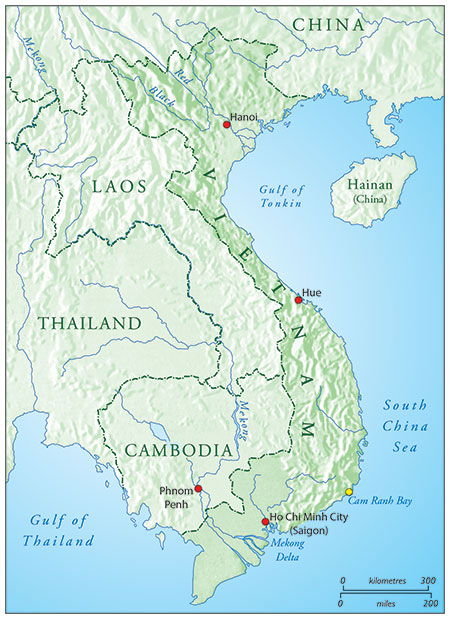
Chinese rule could be harsh. There were moments of fierce Vietnamese resistance, including revolts by the Trung Sisters in the first century AD. The Chinese sent imperial troops to crush them. But many Vietnamese also collaborated with the Chinese, seeing their rule as a motor for change and modernisation. Indeed, a thousand years of Chinese rule spread many aspects of Chinese culture into Jiaozhi. Chinese administrators introduced new notions of law, time and space (legal codes, calendars, measures, weights and maps) as well as bureaucratic statecraft, weapons, paper and a character-based writing system to accompany it. Elite Red River culture changed with the introduction of Chinese-inspired royal architecture, music, art and culinary practices, including the use of chopsticks. Confucianism and Mahayana Buddhism became part of Vietnamese culture during this period.
With the weakening of the Chinese empire under the late Tang (AD 618–907), the Vietnamese regained their independence in the 10th century, only to lose it again in the early 15th century, when the Ming dynasty rebuilt the empire via a mix of persuasion and force. This second colonisation did not last long; the Vietnamese regained their independence in 1427. But once again, Vietnam’s exit from the Chinese imperial state did not mean that colonialism was no longer a part of its story. It remained a driving force. Like the Americans, who left the British Empire in the late 18th century only to create their own colonial state by pushing westwards to the Pacific, the Vietnamese decided to expand. With the Chinese gone, they focused on building their own empire, conquering lands to their south using Chinese weapons, statecraft and colonial ideology of a ‘superior’ Confucian kind. As their armies, administrators and settlers moved southwards, Vietnamese emperors established protectorates, promoted settlements and alternated between ‘direct’ and ‘indirect’ methods of rule over distant, multi-ethnic peoples in their own civilising mission. Where US colonisers conquered Amerindian peoples and rolled back competing European empires in North America, the Vietnamese vanquished the Cham people in central Vietnam, the Khmer in the southern Mekong Delta and a host of non-Vietnamese peoples in the surrounding highlands. Upon coming to power at the turn of the 19th century, the Chinese emperor Jiaqing even feared that the Vietnamese had expansionist designs on southern China.
The Le dynasty, which ruled Vietnam from 1428 to 1789 following the Ming withdrawal, owed much to the colonial encounter. Upon taking back Vietnam and declaring himself emperor in 1428, Le Loi and his successors revamped the state on Confucian lines. This emperor saw the chance to succeed where his predecessors had failed in establishing centralised control over the unwieldy country. He and his descendants promoted Confucian statecraft through the construction of more academies and schools, the acceleration of the civil service examination program and the promulgation of a Le law code with Confucian characteristics.
Rapid colonial expansion triggered civil war and the creation of contesting Vietnamese states vying for control over the expanding territorial state. Though the Le Dynasty ruled the country, two Vietnams emerged following the Chinese withdrawal in the 15th century; one in the north ruled by the Trinh military family and another expanding southwards under the leadership of Nguyen lords. By the 18th century, the southern Nguyen ruled a de facto separate state with its own monarchy, administration and army. Despite their best efforts, the Trinh failed to defeat the rebel state. Civil war further intensified in the 1770s, when the Tay Son brothers, riding on a wave of peasant hunger in the highlands of central Vietnam, drove the Nguyen out of their capital at Hue and pushed them into jungle bases in the Mekong delta. The Tay Son then turned their gaze northwards and eventually overthrew the Trinh in the north in the late 1780s. The Chinese attempted to intervene but to no avail; the Tay Son drove them out, too.
Yet the Nguyen held on from the jungle bases. Indeed, the 30-year civil war only truly ended when the Nguyen family made an extraordinary comeback under the direction of Gia Long. This dynamic military man marched his army up the coast and sailed his navy northwards to defeat the Tay Son and declare the empire of Vietnam in 1802. Today’s S-like Vietnam dates from that year, a product of centuries of colonial expansion and civil war. Since the 1620s Vietnam had been a divided land. There was nothing necessarily aberrant about the existence of ‘two Vietnams’ during the second half of the 20th century.
Gia Long’s son, Minh Mang, ruled this unprecedented united state with an iron fist from his capital in the central city of Hue. Rational to the point of obsession and intelligent like few before him, Minh Mang devoted his 20-year reign to creating a modern state. Ruthless, he would let nothing get in his way. Mirroring Thai and Burmese rulers building states to the west, Minh Mang agreed that centralised authority turning on rational bureaucratic control could allow for more efficient statecraft and economic development. His administrative policies promoted territorial integration, state centralisation, economic development and ideological homogenisation. Civil service exams were revamped to ensure transparency and combat the nefarious effects of nepotism and centuries of warlordism. Indeed, creating a civilian government in charge of the military – and not the other way around – was a priority for Minh Mang and was essential to achieving a new Vietnam.
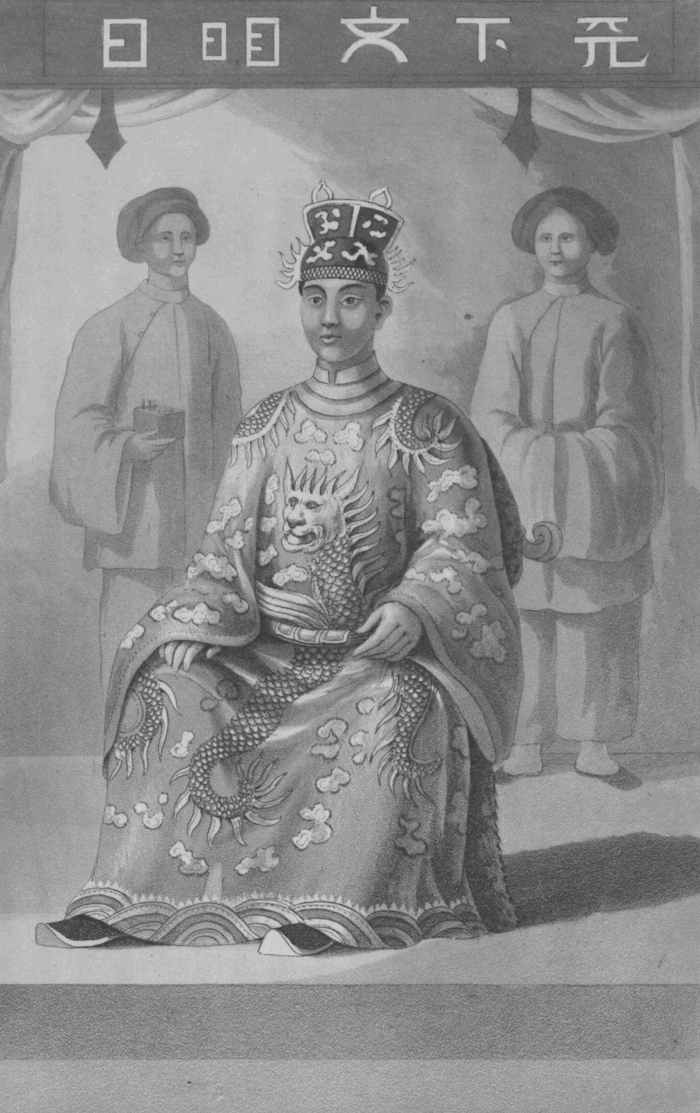
Economically, state-administered taxes on people and trade would provide the money needed to invest in major infrastructure projects, purchase foreign imports and pay the salaries of an expanding civil service. More bureaucratic control extending down to lower levels would allow for the mobilisation of the large amounts of labour needed to build new dykes, roads and bridges. Under Minh Mang, the Nguyen built the Mandarin Road running from Hanoi to Saigon in order to move administrators and troops more effectively between north and south; the French paved it in the early 20th century for much the same reasons. The emperor also supported efforts to promote international trade. He cracked down on the smuggling of rice and opium and in its place promoted state-run commerce with Singapore, China and the West through approved Chinese, Vietnamese and European merchants. The Nguyen organised the large Chinese trading community into congregations so as better to control and tax them.
These economic and political reforms suggest that Minh Mang’s reign in the early 19th century deserves perhaps more than a footnote in the history of modern Vietnam. That is not to say that he achieved everything he set out to, but rather to suggest that modernity in Vietnam, or anywhere else for that matter, is not an all-or-nothing phenomenon and it does not necessarily have to come via a Western colonial connection.
It is also worth noting that the creation of Minh Mang’s Vietnam set off another wave of colonial conquest. In the 1830s, as he revolutionised the state, Minh Mang simultaneously expanded the same territorial entity to include all of modern Cambodia and parts of Laos. In the end, the Vietnamese emperor went too far. When he tried to dismantle the Cambodian monarchy, he triggered a massive Cambodian rebellion and invited Thai military intervention. Cambodia regained its independence under a jointly negotiated Thai and Vietnamese peace. Nevertheless, Vietnam was not necessarily destined to remain an ‘S’. In the end, Thai intervention, not that of the French, saved Cambodia from Vietnamese colonisation in the 1840s.
As the French pushed their own imperial power into Vietnam, they built their state on the pre-existing Vietnamese one. Indeed, the French colonial state of Indochina, officially proclaimed in 1888, strangely reflected the borders of Minh Mang’s greater Vietnam of the 1830s, including Cambodia and much of Laos. Although the 20th-century quest for unity and independence is important to understanding Vietnam, it overlooks the fact that there has never been one Vietnam but several remarkably varied ones. While the Vietnamese suffered at the hands of the French for 80 years, they were not always victims of foreign colonisation. They were colonisers themselves.
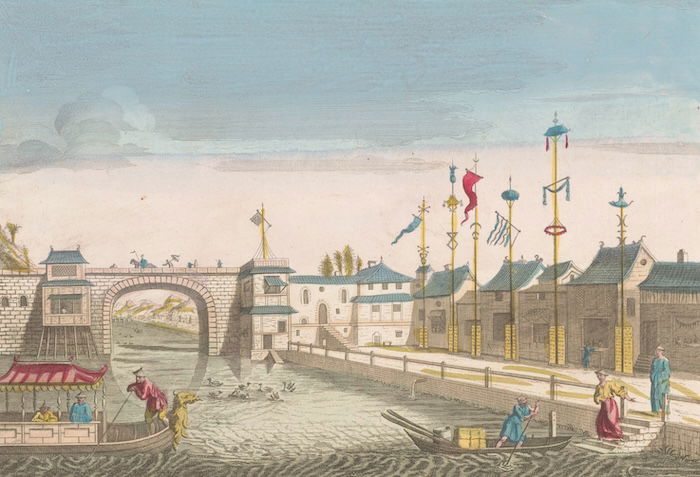
Standard accounts of Vietnam’s relationship with China characterise it as one of unstinting Vietnamese resistance to Chinese aggression. It is an attractive narrative for nationalists in Vietnam, who seek to invoke a timeless culture of resistance to foreign invaders, not only during their struggles against the French and the Americans in the mid-20th century but also more recently against the Chinese during a border war in the 1980s and in a tense showdown in the South China Sea today. But, as we have seen, this ‘anti-Chinese’ narrative oversimplifies things. Instead, we should recognise that Vietnam, like Korea and even Japan, is in a unique position in that it has previously been a part of, and has always had to deal with, the massive world empire that the Chinese have built since Han times (206 BC–AD 220). Like the Franks and Germans dealing with the Roman Empire at the same time, the Vietnamese borrowed many things from the Chinese. So did the Koreans and the Japanese at one point or another. The difference, however, between, say, the Franks and the Germans on the one hand and Vietnam and Korea on the other is that the Roman Empire crumbled in the fifth century AD whereas its Chinese counterpart is still with us. The Chinese empire has always been able to reconstitute and even expand itself.
The Vietnamese, like the Koreans, found themselves borrowing from the Chinese to build their own countries and cultures on the periphery of Imperial China, while always having to make sure that the Chinese did not force them back into that same imperial order. This meant that the Vietnamese have always had to convince themselves that they are not Chinese, despite their reliance on models from China, all the while presenting themselves as the messengers of a superior civilisation they were pushing southwards via their own colonial expansion. It was a unique, difficult and fascinating balancing act. The French and the Germans never had to worry about the Romans coming back to crush them or to heap ridicule upon their borrowings of Roman statecraft, myths, language or claims to be the new Caesars in post-Roman Europe (Tsars, Czar, Kaiser). The Vietnamese did – constantly.
Vietnamese communists find themselves in a similar situation today. They have borrowed heavily from Chinese communist models and methods, including ones for military operations, building a single-party state, and, since the economic reforms of the 1980s, tailoring capitalist economics to preserve that same communist rule. But the Vietnamese communist leadership does this despite the fact that Chinese communists are now intent on pushing their empire far beyond its continental limits. Vietnam’s historical relationship with China, communist or Confucian, is such that Vietnamese leaders continue to find themselves relying on Chinese models to maintain their hold on power in Vietnam while simultaneously opposing the expanding Chinese empire at the international level. The balancing act is especially difficult now that opponents to communist rule in Vietnam are trying to discredit the party for following the Chinese model.
Standard accounts of Vietnam, especially those written by authors opposed to US interference from the 1950s, tend to downplay the country’s geopolitical importance. They maintain that the US had no business getting involved in Vietnam in the first place. That may be, but it does not diminish the fact that the Americans were hardly the first to intervene in Vietnam and to attach great importance to its location. Because of its overland connections to South-East Asia and its maritime opening to the Pacific and Indian Oceans, Vietnam has always attracted the interest of bigger powers. In the second century BC, Vietnam, as the Chinese empire’s southernmost province, served as a gateway for China’s trade with Indian Ocean markets extending to India and the Middle East. As we have seen, the Vietnamese secured their independence in 939, but briefly lost it again to the Chinese in the early 15th century, when the Ming dynasty recolonised Vietnam as part of a wider colonial expansion that sent Chinese armadas across the Indian Ocean as far as Africa and the Red Sea. The Mongols also tried to pass through Vietnam in order to take control of the Spice Islands in today’s Indonesia. The Vietnamese pushed the Mongols back by land, while the Japanese and Javanese did so by sea. The Vietnamese regained their independence, then pushed their empire southwards to benefit from trade within the Indian Ocean.
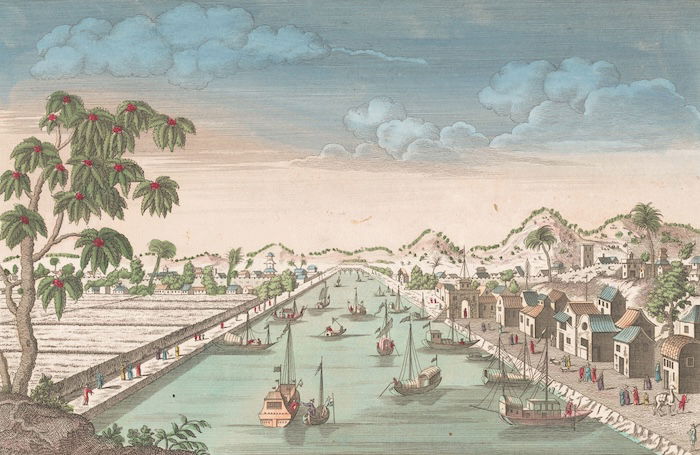
Following the Chinese naval withdrawal in 1433, a new set of European powers soon expanded into the region via the Pacific and Indian Oceans: the Spanish and Portuguese, followed by the British, French and Dutch. These western imperial powers adopted increasingly aggressive policies towards Asia in the 19th century, when the French colonised Vietnam and the British founded Singapore and took Burma and Malaya. Meanwhile, the Americans crossed the Pacific Ocean to take the Philippines from the Spanish and the Japanese focused their colonial sights on Korea and Taiwan. The Americans were colonisers, too, and they were part of a larger colonial assault on Asia, intensifying in the 19th century.
The French were aware of the strategic importance of their Vietnamese colony in this wider imperial competition in Asia. They had initially hoped that the Mekong would provide a navigable route to China for trading purposes. In the early 20th century, they finished building the deep-water port of Cam Ranh Bay, located off the south-eastern coast of Vietnam. Russian warships dispatched from the Baltic to stop Japanese colonial expansion into China and Korea gathered there before being defeated by the Japanese in 1905. Following the Japanese invasion of China in 1937, President Franklin Roosevelt closely followed Japanese movements down the Chinese coastline and imposed a strategic embargo on trade with Japan, including oil, iron and steel, as Japanese imperial troops started occupying Vietnam in 1940. His fears of a wider Japanese thrust into the Indian Ocean via Vietnam were well founded. In early 1942, having attacked Pearl Harbor and occupied all of Vietnam, the Japanese concentrated their ships in Cam Ranh Bay before attacking South-East Asia and striking as far as the Andaman and Nicobar Islands. Created in 1942, the American 7th Fleet helped roll back the Japanese empire during the rest of the war and remained to protect America’s postwar control of the Pacific and Indian Oceans to this day.
Following the Chinese communist revolution in 1949, US presidents of both parties (Truman, Eisenhower, Kennedy and Johnson) were convinced that if Vietnam fell to the communists, it would allow them to dominate the region much as the Japanese had done before them. Despite their disdain for French colonial rule, from 1950, as the Korean War got underway, the Americans increased support for the French in Vietnam in a bid to contain the spread of communism. The 7th Fleet first visited the colony in 1950 to reassure France of American backing. When the French withdrew after Dien Bien Phu and Vietnam, like Korea, was divided into a communist North led by Ho Chi Minh and a non-communist South, the Americans accepted this policy but steadily increased their support for an anti-communist Vietnamese leader for the South, Ngo Dinh Diem. As long as this man did not undermine America’s wider strategic goal of containing Eurasian communism, things could continue as they had with the French. But they did not and, when Diem’s draconian policies in the countryside (botched land reform, strategic hamlets and repression) seemed to play into the communist hands, the Americans supported his overthrow in 1963. When stability remained elusive, however, President Johnson had either to get out or intervene directly. He decided on the second option, sending ground troops into the country in 1965, while the US navy stationed the bulk of its forces in Cam Ranh Bay.
Ironically, the American withdrawal from Vietnam in April 1975 did not diminish its geopolitical importance for the new set of ‘great powers’ competing for influence in the communist world, the Soviets and the Chinese. Having broken with the Soviet Union by the late 1960s, the Chinese worried that their communist brethren in Hanoi would join the Soviets and encircle them from the south (the Soviet army invaded Afghanistan in 1979). The Chinese threw their weight behind Pol Pot and the genocidal Khmer Rouge in Cambodia, whose leaders were virulently opposed to Vietnam and its people. In turn, the Vietnamese looked to the Soviet Union, signing a security alliance in 1978 which included the lease of Cam Ranh Bay, before overthrowing the Khmer Rouge later that year. China’s leader, Deng Xiaoping, then travelled to the United States in an attempt to win support to teach Vietnam a lesson. In early 1979 the Chinese sent troops into Vietnam in what was the first ever war between communist countries. Both sides claimed victory in the following Sino-Vietnamese conflict, which ended with China’s withdrawal from Vietnam on March 6th, 1979 after declaring their punitive mission accomplished.
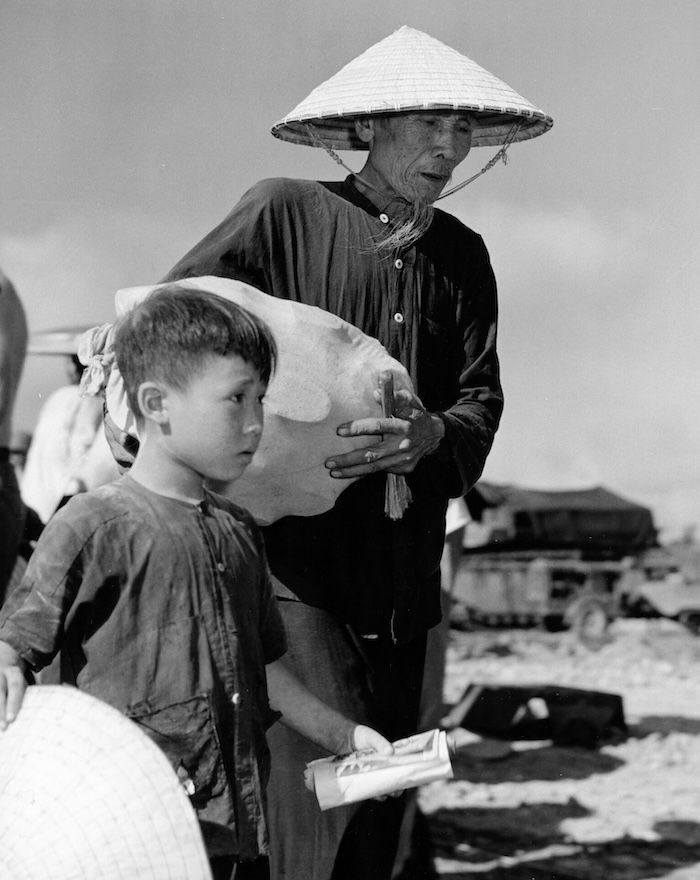
The crumbling of the Soviet Union and its European satellites by 1991 profoundly changed the geopolitical calculus but not the strategic importance of Vietnam. With the Soviets gone, the Chinese have, for the first time since recalling their armadas in 1433, begun reasserting their influence into the Indian Ocean, taking, claiming and even building islands as they dispatch their vessels across the seas. Given that the war among Asian communists in the late 1970s put to rest any notion of an operational communist bloc, Vietnamese communists have now entered negotiations with the Americans, Japanese, Europeans and anyone else who can help them deal with the resurgence of Chinese power, despite their relying on Chinese communist models for economic renovation and continued rule.
America shares Vietnam’s desire to contain the Chinese. That is why, like Presidents Clinton and Bush before him, President Obama travelled to Vietnam in 2016. The Americans need Vietnam and the Vietnamese need them. Vietnam is in the middle of a zone where US control of the Indian Ocean dating from the Second World War bumps up against a Chinese nation increasingly willing to challenge the American monopoly of Asian waters. Talks have already begun with a view to allowing American vessels to use the naval facilities of Cam Ranh Bay.
Christopher Goscha is Professor of History at the University of Quebec at Montreal. He is the author of The Penguin History of Modern Vietnam (Penguin, 2016).



